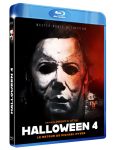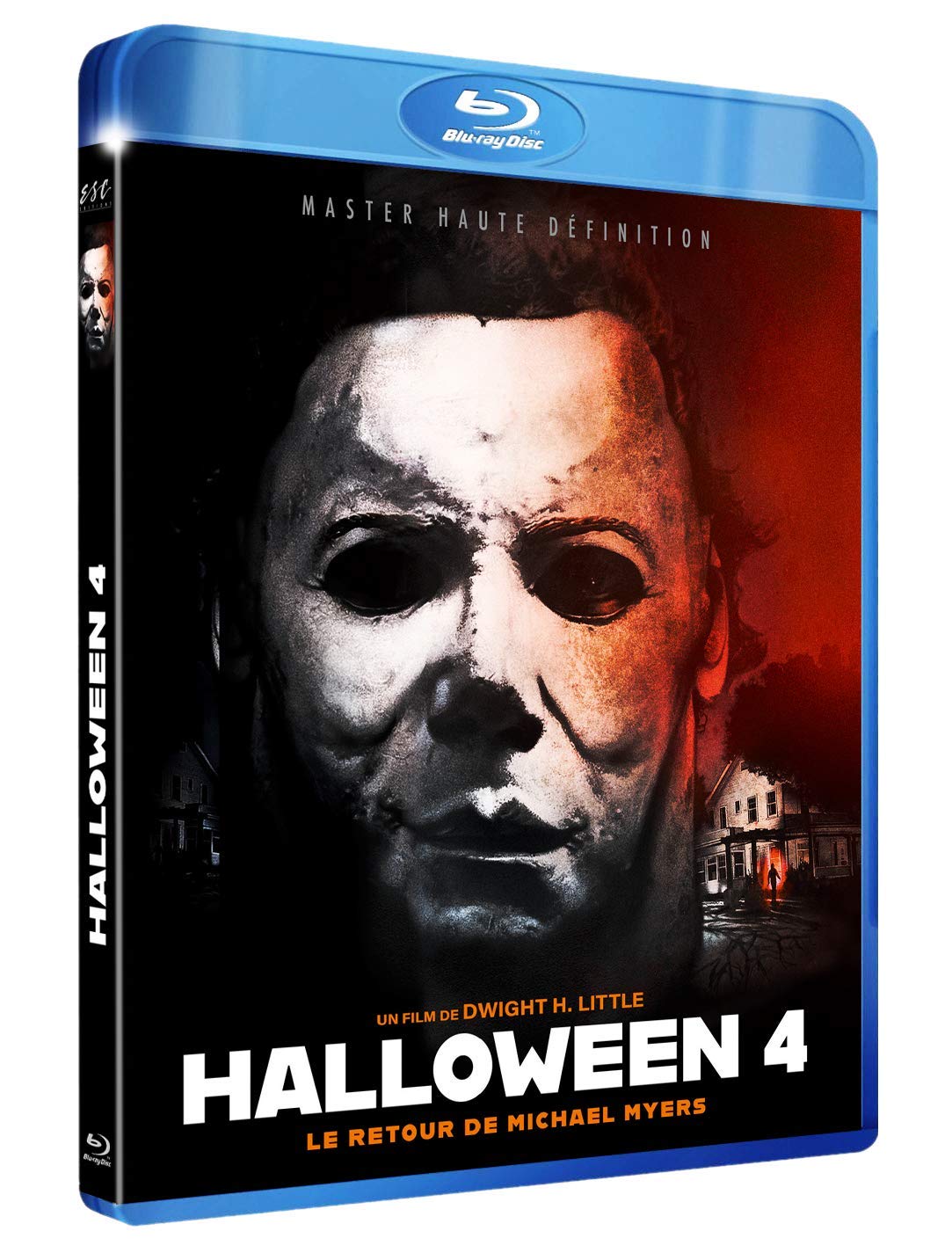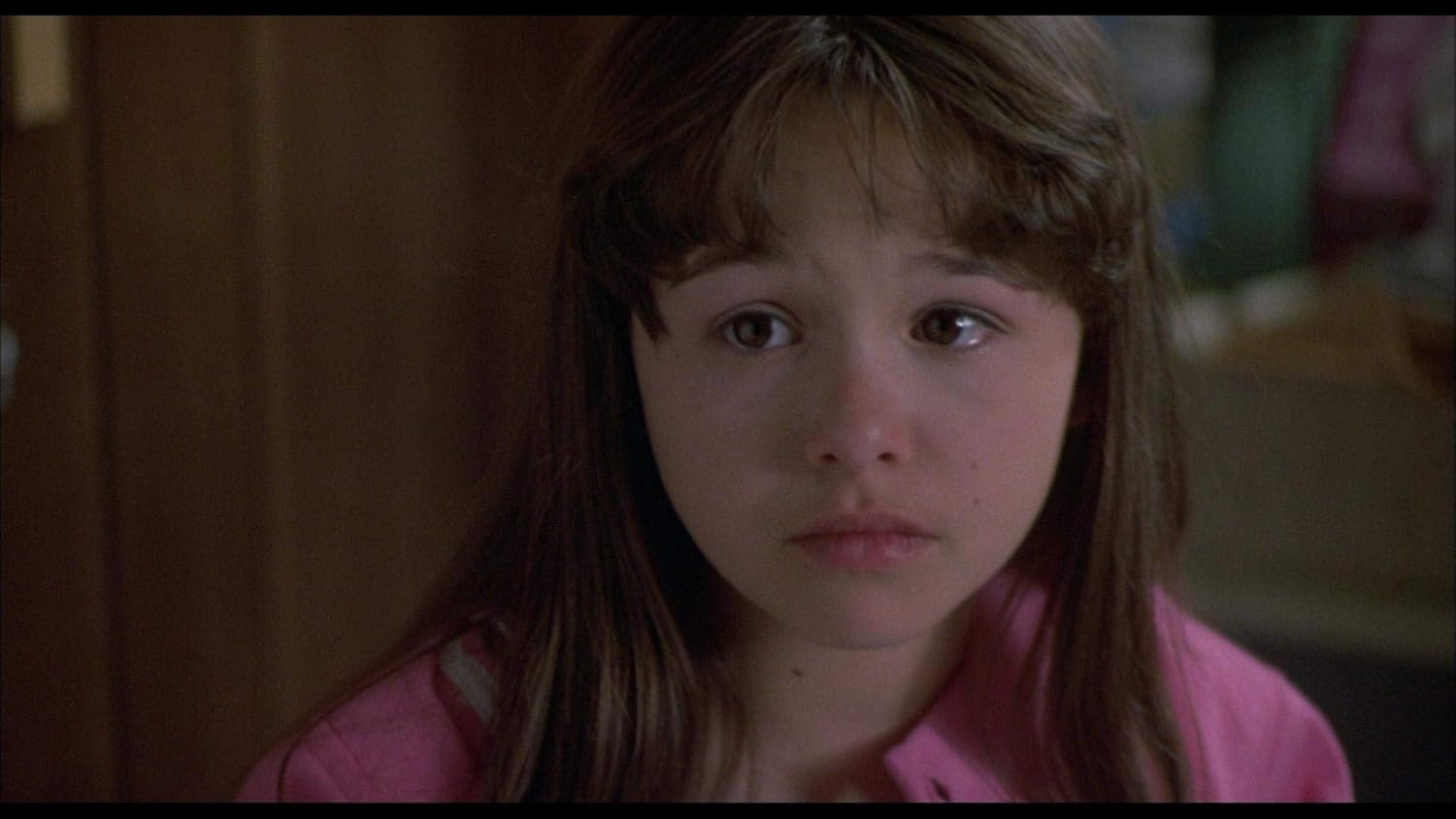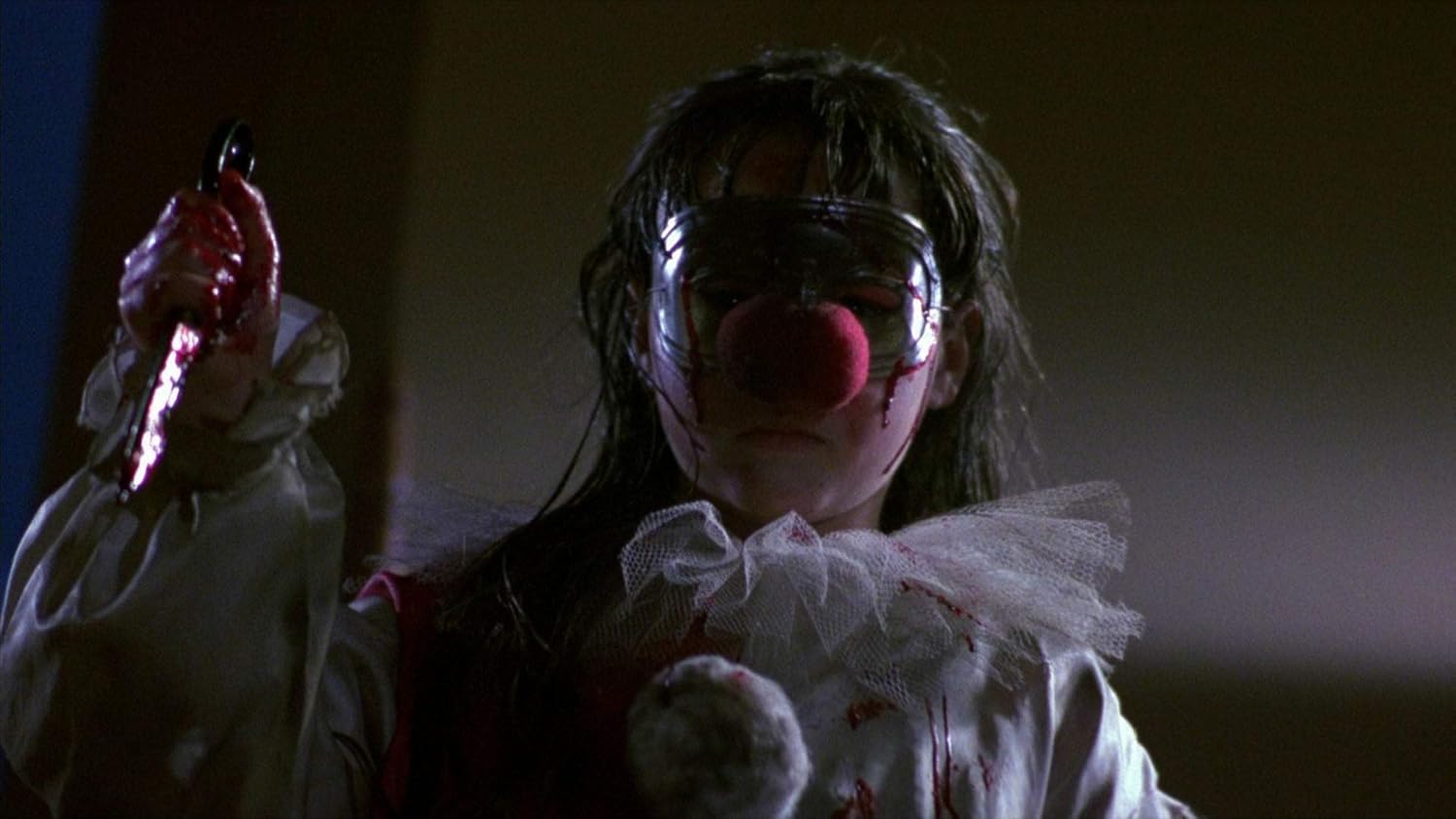
Halloween 4: The Return of Michael Myers Review Michael Myers Movies – Oemiu
Halloween 4: More Than Just a Sequel – A Deep Dive into Michael’s Resurrection
Halloween. The very name conjures images of jack-o’-lanterns, costumes, and, for horror aficionados, the chilling visage of Michael Myers. But let’s be honest, the *Halloween* franchise, like many long-running horror series, has had its ups and downs. After the bizarre, Michael-less tangent that was *Halloween III: Season of the Witch*, fans were clamoring for the Shape’s return. Enter *Halloween 4: The Return of Michael Myers*. Released in 1988, this film wasn’t just a sequel; it was a promise. A promise to bring back the boogeyman, to return to the roots of what made *Halloween* so terrifying in the first place. And while it may not reach the heights of John Carpenter’s original masterpiece, *Halloween 4* succeeds in reigniting the fear, offering a compelling narrative and solidifying itself as a worthy entry in the sprawling saga of the Michael Myers movies.
A Legacy Restored: The Story and Its Impact
*Halloween 4* picks up a decade after the events of the first two films. Michael Myers, presumed dead after the fiery climax of *Halloween II*, is being transferred from one mental institution to another. Of course, no cross-country transfer involving a masked maniac ever goes smoothly. Michael awakens, escapes, and immediately sets his sights on his niece, Jamie Lloyd (Danielle Harris), the orphaned daughter of Laurie Strode (who, according to the story, died in a car accident). This is a crucial plot point, as it establishes a new generation facing the Myers curse. The introduction of Jamie as Michael’s primary target provides a fresh emotional core to the film. We’re no longer just watching anonymous teenagers get stalked; we’re invested in the survival of a vulnerable child.
Dr. Loomis (Donald Pleasence), naturally, is back to warn everyone that Michael is pure evil incarnate and must be stopped at all costs. Pleasence’s performance is as captivating and frantic as ever, adding a much-needed gravitas to the proceedings. Loomis’s relentless pursuit of Michael, fueled by a mixture of professional responsibility and personal obsession, forms a compelling counterpoint to Michael’s single-minded focus on Jamie. The film expertly balances the slasher elements – the brutal kills and suspenseful stalking sequences – with the growing sense of dread and impending doom. The cinematography, particularly the use of shadows and POV shots, effectively amplifies the tension, making the audience feel as if they are right there in Haddonfield, bracing for Michael’s inevitable arrival. While some might argue that the plot is somewhat predictable, *Halloween 4* delivers exactly what fans wanted: Michael Myers, relentless and terrifying, wreaking havoc on Halloween night. This film firmly established the formula for subsequent Michael Myers movies, focusing on family connections and the seemingly unstoppable nature of the Shape.
| Feature | Halloween (1978) | Halloween 4 (1988) |
|---|---|---|
| Main Target | Laurie Strode & Friends | Jamie Lloyd |
| Dr. Loomis’ Role | Initially skeptical, then alarmed | Experienced and desperate |
| Overall Tone | Subtle suspense, psychological horror | More overt slasher elements, increased gore |
| Michael’s Mask | More simplistic and unsettling | Slightly altered, some consider less menacing |
Jamie Lloyd: A New Face of Fear
Danielle Harris’s portrayal of Jamie Lloyd is arguably one of the strongest aspects of *Halloween 4*. As a young child grappling with the unimaginable threat of her uncle, Jamie is both vulnerable and surprisingly resilient. Harris imbues the character with a genuine sense of fear and innocence, making her plight all the more compelling. We see her struggle to understand why she is being targeted, why this masked figure is so relentlessly pursuing her. Jamie’s vulnerability provides a stark contrast to Michael’s unwavering evil, creating a powerful dynamic that drives the narrative forward. She is not just a damsel in distress; she is an active participant in her own survival, demonstrating courage and resourcefulness that belies her young age.
The relationship between Jamie and her foster sister, Rachel Carruthers (Ellie Cornell), is another crucial element that elevates the film beyond a simple slasher. Rachel acts as Jamie’s protector, risking her own life to keep her safe from Michael. Their bond is believable and heartwarming, providing a much-needed element of humanity amidst the carnage. Rachel’s evolution from a typical teenage girl to a fierce defender of Jamie is one of the most satisfying character arcs in the film. She is not a trained fighter or a seasoned survivor; she is simply a young woman who is determined to protect the child she loves. This relatable heroism resonates with the audience, making them even more invested in Jamie and Rachel’s survival. The final scene, with Jamie seemingly inheriting Michael’s evil, is a shocking twist that sets up the events of *Halloween 5* and adds a layer of complexity to the narrative. It raises questions about the nature of evil and whether it can be inherited, passed down through bloodlines. This ending, though controversial among some fans, demonstrates the film’s willingness to take risks and explore the darker aspects of the *Halloween* mythology. The lasting impact of Jamie Lloyd within the broader scope of the Halloween movies is substantial; she became a symbol of innocence threatened, prompting the audience to question what lengths they would go to in order to protect what they love.
The Mask, the Myth, the Murder: Michael Myers Deconstructed
Let’s talk about Michael Myers himself. *Halloween 4* presents him as a force of nature, an unstoppable entity driven by an insatiable bloodlust. He is not merely a man; he is the embodiment of pure evil. The mask, of course, is crucial to his mystique. While some fans may quibble about the specific design of the mask in *Halloween 4*, it remains a chilling symbol of anonymity and inhumanity. The blank, expressionless face hides the darkness within, making him all the more terrifying. The iconic coveralls, too, contribute to his unsettling presence. They are simple and utilitarian, suggesting a lack of personality or individual identity. Michael is not defined by his clothing or his appearance; he is defined by his actions, by the terror he inflicts upon others.
The film also delves into the psychological aspects of Michael’s evil. Dr. Loomis repeatedly refers to him as being devoid of humanity, a creature incapable of empathy or remorse. This portrayal reinforces the idea that Michael is not just a killer; he is something more sinister, something beyond human comprehension. His motivations are unclear, his actions seemingly random, which only adds to his terrifying presence. He doesn’t need a reason to kill; he simply kills because he can. The movie also highlights Michael’s resilience. He endures injuries that would kill a normal person, continuing his relentless pursuit of Jamie despite being shot, burned, and seemingly crushed. This superhuman durability contributes to his mythic status, making him appear almost supernatural. The Shape’s enduring popularity within the realm of slasher icons demonstrates his timeless ability to frighten; subsequent slasher villains owe a debt to the blueprint laid out by Carpenter’s original creation and further cemented by sequels like *Halloween 4*.
Critical Reception and Lasting Influence
*Halloween 4: The Return of Michael Myers* received mixed reviews upon its release, but it was a commercial success, grossing over $17 million on a relatively small budget. Many critics praised the film’s return to the slasher roots of the original, while others criticized its predictability and reliance on genre tropes. However, over time, *Halloween 4* has gained a significant following among horror fans, who appreciate its atmospheric tension, compelling characters, and effective scares. Its success also paved the way for several more sequels, continuing the Michael Myers saga.
The film’s influence can be seen in numerous subsequent horror films, particularly those that focus on masked killers and unstoppable boogeymen. The success of *Halloween 4* demonstrated that audiences were still hungry for classic slasher fare, even after a decade of increasingly outlandish and self-referential horror films. It helped to revive the subgenre and pave the way for a new wave of slasher films in the late 1980s and early 1990s. Moreover, *Halloween 4* solidified the formula for the *Halloween* franchise, focusing on Michael’s pursuit of his family members and Dr. Loomis’s desperate attempts to stop him. This formula, while occasionally tweaked, has remained a constant throughout the series, ensuring that Michael Myers remains a relevant and terrifying figure in the world of horror. Understanding the evolution of these Michael Myers movies provides fans with insight into shifting cultural fears and tastes. *Halloween 4* serves as a pivotal point in that evolution, bridging the gap between the suspenseful atmosphere of the original and the more explicit gore of later entries.
Halloween Horror Nights Connection
The *Halloween* franchise has had a significant presence at Universal Studios’ Halloween Horror Nights (HHN) events over the years. *Halloween 4: The Return of Michael Myers* has been featured in several HHN haunted houses, bringing the film’s iconic scenes and characters to life for park attendees. These houses typically recreate key moments from the movie, such as Michael’s escape from the mental institution, his stalking of Jamie Lloyd, and the climactic showdown in the Carruthers’ house.
The HHN houses dedicated to *Halloween 4* often utilize detailed sets, realistic props, and talented scare actors to create a truly immersive and terrifying experience. Guests can expect to encounter Michael Myers lurking around every corner, ready to strike at any moment. The houses also incorporate elements of the film’s score and sound design to further enhance the atmosphere of dread. The inclusion of *Halloween 4* in Halloween Horror Nights highlights the film’s enduring popularity and its ability to scare audiences even decades after its release. It also demonstrates the franchise’s continued relevance in the world of horror and its ability to connect with fans of all ages. Being featured in such a prominent event solidifies the film’s place within the pantheon of classic horror properties.
FAQ
What makes *Halloween 4* a worthwhile entry in the series?
Is it better than the original?
While it doesn’t surpass the original’s brilliance, *Halloween 4* successfully revitalized the franchise after the experimental *Halloween III*. It brought back Michael Myers, focusing on suspense and building a new narrative with Jamie Lloyd as the central figure. The movie effectively blends slasher elements with a developing sense of dread, creating an engaging experience for horror fans. Dr. Loomis’ presence also adds a sense of urgency and gravitas. The film’s commercial success also proved that audiences were still craving classic slasher horror. It’s not just a simple rehash of the first two; it tries to carve out its own niche while staying true to the core elements that made *Halloween* so successful.
How does Danielle Harris’s performance as Jamie Lloyd compare to other child actors in horror films?
Danielle Harris’s performance as Jamie Lloyd is often considered one of the standout aspects of *Halloween 4*. She portrays Jamie with a vulnerability and resilience that is both believable and captivating. Unlike some child actors in horror films who can come across as wooden or unconvincing, Harris brings a genuine sense of fear and innocence to the role, making her plight all the more compelling. Her portrayal of Jamie as a child grappling with the unimaginable threat of Michael Myers elevates the film beyond a simple slasher and adds an emotional core that resonates with the audience. She is not simply a victim; she is an active participant in her own survival, demonstrating courage and resourcefulness that belies her young age. Many regard it as a standout performance compared to other child actors in similar genre roles.
What are some of the common criticisms of *Halloween 4*?
Is the mask the biggest issue?
Some common criticisms of *Halloween 4* revolve around its predictability and reliance on genre tropes. Some find the plot somewhat formulaic, following a familiar slasher narrative. The design of Michael Myers’ mask is another point of contention among fans, with some feeling that it is not as menacing or iconic as the mask in the original film. Additionally, some viewers find the level of gore and violence in *Halloween 4* to be excessive compared to the more subtle suspense of the original. However, many fans argue that these criticisms are minor in comparison to the film’s overall strengths, such as its effective atmosphere, compelling characters, and strong performances.
How does *Halloween 4* contribute to the overall mythology of Michael Myers and the *Halloween* franchise?
*Halloween 4* is a crucial entry in the *Halloween* franchise because it re-established Michael Myers as the central antagonist after his absence in *Halloween III*. It also introduced Jamie Lloyd, the daughter of Laurie Strode, as a new target for Michael, adding a fresh dynamic to the narrative and setting up the events of subsequent sequels. The film solidified the formula for the franchise, focusing on Michael’s pursuit of his family members and Dr. Loomis’s desperate attempts to stop him. It also explored the psychological aspects of Michael’s evil, portraying him as an unstoppable force of nature devoid of humanity. The ending, with Jamie seemingly inheriting Michael’s evil, adds a layer of complexity to the mythology and raises questions about the nature of evil.
How does the score of *Halloween 4* compare to the original *Halloween* score by John Carpenter?
While the score for *Halloween 4* is composed by Alan Howarth (who also worked with John Carpenter on several other films), it doesn’t quite reach the same level of iconic status as Carpenter’s original score. Howarth’s score effectively captures the suspenseful atmosphere of the film and incorporates elements of Carpenter’s original theme, but it also introduces new themes and motifs that are specific to *Halloween 4*. Some fans feel that Howarth’s score is more overtly dramatic and action-oriented than Carpenter’s, while others appreciate its more modern and energetic sound. Ultimately, the score for *Halloween 4* is a solid and effective accompaniment to the film, but it is generally not considered to be as groundbreaking or influential as Carpenter’s original score.
How did the death of Laurie Strode impact the Halloween Movies series?
The decision to kill off Laurie Strode between *Halloween II* and *Halloween 4* was a controversial one. While it allowed the filmmakers to introduce Jamie Lloyd as a new protagonist and create a fresh dynamic, it also disappointed many fans who were invested in Laurie’s story. Some felt that Laurie’s death was disrespectful to the character and undermined her status as a strong and resourceful survivor. Others argued that it was a necessary step to move the franchise forward and explore new themes. Regardless of one’s opinion, Laurie’s death had a significant impact on the *Halloween* franchise, paving the way for new characters and storylines while also generating controversy among fans. The Halloween movies that followed grappled with the legacy of Laurie’s impact on the narrative.
What is the scariest scene in *Halloween 4*?
Is it the end scene?
Defining the “scariest” scene is subjective, but several moments in *Halloween 4* stand out for their effectiveness. The scene where Michael ambushes the police convoy transporting him is tense and shocking, showcasing his brutality and cunning. The numerous scenes where Michael stalks Jamie and Rachel, particularly those that utilize POV shots and close-ups of his mask, are also highly effective at building suspense. Many viewers find the ending, with Jamie seemingly inheriting Michael’s evil, to be the most chilling moment in the film, leaving a lingering sense of unease and ambiguity. The impact of each scene varies from viewer to viewer, shaped by their own preferences regarding what they find frightening.



Price: $19.99 - $27.98
(as of Sep 11, 2025 14:14:36 UTC – Details)




